So, what exactly is hot ice? Well, it’s simple. It’s made by boiling baking soda, vinegar, and a little bit of water. From that, you get sodium acetate.
It’s a white powder that’s used in chemical heating packs. Now, you can make sculptures and ice crystal formations.
Although this substance isn’t made out of ice, it definitely looks like it, except you probably don’t want to touch it as it is quite hot. So, what would happen if hot ice was everywhere?
With all our ice now being hot, instead of freezing cold, it would significantly change a massive part of our world, the Arctic. Instead of the area being one of the coldest on Earth, it would be a lot warmer.
One of the things you’ll notice quickly will be all the animals migrating to new locations, because the Arctic is now far too warm for them. Although hot ice won’t necessarily burn your skin right away, it would be uncomfortable for the foxes and polar bears living in the Arctic.
Not only would it be uncomfortable to touch, but it would also make the Arctic much warmer than before. And prolonged exposure to the hot ice wouldn’t be good either. Instead of frostbite, thermal burns would occur.
Remember, although we call it hot ice it’s far from frozen water that happens to be hot. This ice is a collection of chemicals, and should not be played with, consumed, and definitely not lived in.
So with that being the case, all these arctic animals would be moving down to Canada, or wherever else they might be able to find a home. But it might not be all that bad.
Our new hot ice caps in the Arctic will take longer to melt than the current ice caps we have today. It’s no secret that the ice caps are melting at a rapid rate due to the Earth heating up.
But with our new hot ice caps, they won’t melt until they reach 58°C (136.4°F), as opposed to regular ice that melts at 0°C (32°F). Although they’ll be radiating their heat off each other, it’s unlikely they’d make the entire Arctic a whopping 58°C. At that temperature, it would be nearly impossible to sustain any kind of life.
The Arctic wouldn’t get that hot, but it would be much warmer than the Earth is used to. And that goes for all the ice. Instead of bundling up in the snow, we might be able to get away with wearing shorts and a T-shirt.
But what if all this new hot ice did melt? Apart from the issues with flooding and rising ocean levels, we’d have a lot more to worry about.
All this melted hot ice would become part of our oceans. Anything living there would most likely die, considering that we’re now introducing billions of liters of chemicals into the sea.
And what would happen if you accidentally drank some of this stuff? At first, you’d probably be okay.
In small doses, hot ice isn’t enough to kill you. But if it’s all you drank, you’d quickly get sick and then die.
And if all our ice happened to be made out of hot ice, would our oceans be made of melted hot ice? If that happened, our oceans would be filled with a supersaturated solution.
And if someone happened to have sodium acetate handy, and dumped a massive amount of it into the ocean, it would slowly crystallize and solidify. This happens due to a chemical reaction when the saturated solution can’t absorb any more solids. In this case, it starts to crystallize, turning the liquid into a solid.
But that might be the least of our worries at this point. After all, the Earth would have to be above 58°C (136.4 °F) for this to happen, which would make it unlivable for us humans.
Subscribe to What-If on YouTube or follow the show on Facebook Watch.
Sources
- “How to Make Hot Ice”. 2019. Wikihow. Accessed December 2 2019.
- “Ice Cap”. Society, National. 2012. National Geographic Society. Accessed December 2 2019.
- “Sodium acetate”. 2019. pubchem.ncbi.nlm.nih.gov. Accessed December 2 2019.
- “Facts about glaciers”. 2019. nsidc.org. Accessed December 2 2019.
- “Uses for Sodium Acetate | Livestrong.Com”. Robin Wasserman, 2019. LIVESTRONG.COM. Accessed December 2 2019.
- “Supersaturated Solution: Definition & Example – Video & Lesson Transcript | Study.Com”. 2019. study.com. Accessed December 2 2019.


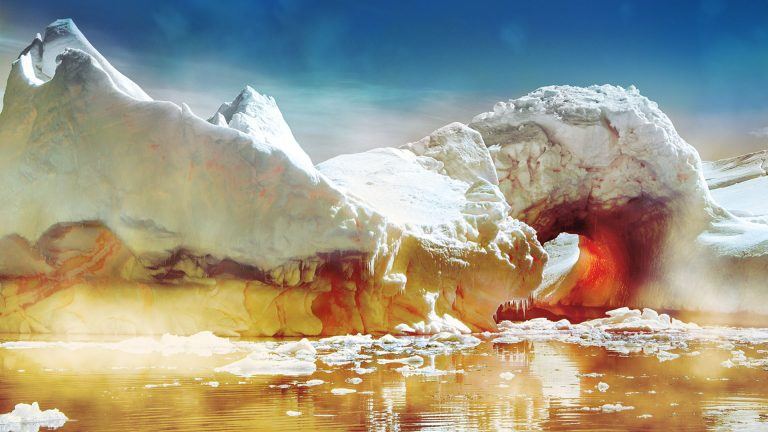
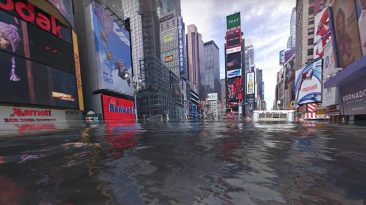

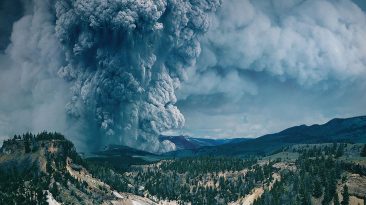
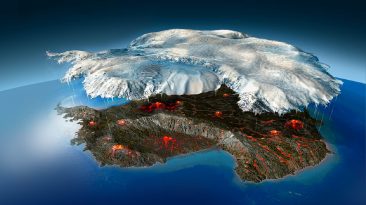





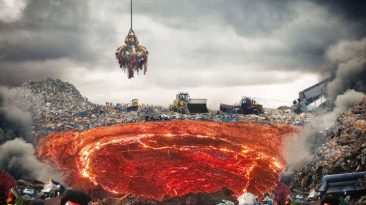






Im surprised you guys didn’t mention Superionic Ice.
https://www.labroots.com/trending/chemistry-and-physics/14855/superionic-water-ice-formed-extreme-heat-pressure#:~:text=Superionic%20Water%2D%2D%22Ice%22%20Formed%20Under%20Extreme%20Heat%20and%20Pressure,-WRITTEN%20BY%3A%20Daniel&text=When%20every%20water%20molecule%20manages,form%2C%20water%20solidifies%20into%20ice.